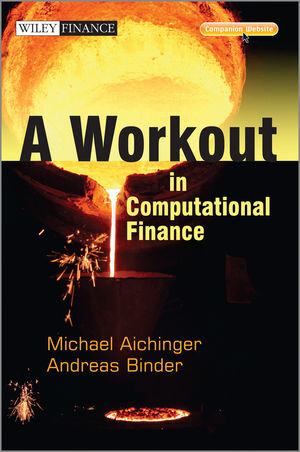
„Mathematical Finance needs both: a well-founded theorybased on stochastic calculus as well as numerical valuation schemesthat work. In A Workout in Computational Finance the authorsput emphasis on the numerical aspects and present an impressiverange of numerical methods. All these techniques have beenimplemented by their group and can be used as a starting point forbuilding a professional software system.“
--Walter Schachermayer, Full Professor forMathematical Finance, University of Vienna
„With their strong background in numerical simulation ofindustrial problems, the authors succeed to develop the concepts ofdifferent numerical schemes which are useful for computationalfinance and essential for valuation, risk analysis and the riskmanagement of financial instruments. Especially in times ofdifficult market environments, the mathematical and algorithmicfoundation of software used in banking must be a solid one whichavoids additional traps of poor implementation. A Workout inComputational Finance gives clear recommendations for thepreferred numerical methods for various models and instruments. Thebook will be utmost useful for practitioners but it also will be ofgreat interest for researchers in the field.“
--Gerhard Larcher, Institute of MathematicalFinance, Kepler Universität
„The authors cover a broad range of numerical techniquesfor differential equations in computational finance, such as finiteelements, trees, Monte Carlo, Fourier techniques and parametercalibration. Using sound, yet compact mathematical reasoning, theycapture the substance of models for interest rate and equityderivatives, and provide hands-on guidance to numerics, coveringall sorts of practical challenges. A vast number of numericalresults illustrate potential implementation pitfalls and themitigation techniques presented. With its strong focus on tangibleusability this book is a highly valuable manual for students aswell as professionals.“
--Robert Maringer, Head Valuation ControlSwitzerland, Credit Suisse
„For shaping your body you should go to a gym, while forbuilding up your numerical toolkit you need a workout incomputational finance. This modern treatment of numerical methodsin quantitative finance addresses problems that professionalsworking in the field face on a daily basis. The very clearpresentation of the material also makes it a perfect fit forstudents having a background in the theory of mathematical financewho want to gain insight on how practical problems are tackled inthe industry.“
--Philipp Mayer, Financial Modeling, ING FinancialMarkets, Brussels



